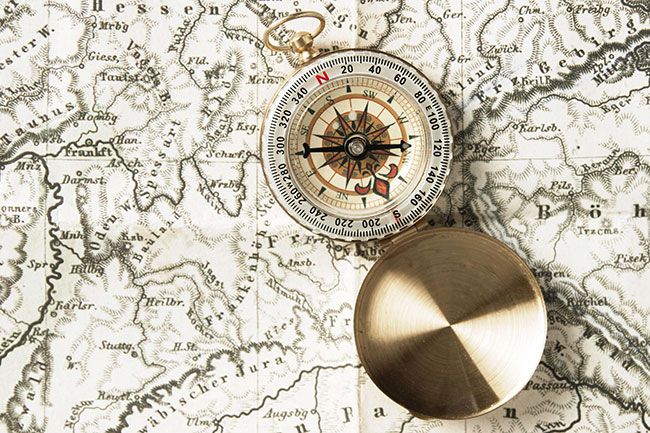Gary Conkling: Civilizations come and go; migrations just keep coming

The place we call America has always been pluralistic.
Before European explorers, religious pilgrims and Black slaves arrived, there were people already living here in diverse societies with their own heritage, traditions and racial identity. And their ancestors were migrants, too.
Archaeologists have uncovered evidence of complex communities buried under the Amazon rainforest that built houses, engaged in agriculture, painted their history on cave walls and constructed large pyramids. Carbon dating indicates the Amazon pyramids predate those in Egypt by 10,000 years.
Who were the Amazonians? Where did they come from? How did they reach this place? Where did they go?
All we know for certain is they left behind the largest rainforest on the planet. We can surmise, however, that they were migrants.
Humans have been migrating for millennia, and mostly for the same reasons — food, water, survival and opportunity. The migrations span oceans, continents and possibly even the Ice Age.
The men, women and children trying to step on American soil at the country’s southern border are following a path well worn by our human ancestors.
They are migrants escaping drought, hunger, violence and oppression. They are the products of ancient pluralism.
It is natural for people already established in a land to resist people trying to move in. That’s as human as the instinct to migrate and survive.
Civilizations have risen and fallen, some at the hands of nature, others at the hands of migrating marauders. There’s evidence some ancient societies chose to blend in with migrants who possessed better tools and consequently a better chance to survive.
Proponents of replacement theory act as if migration is a conspiracy. It’s not.
Migration is an instinct that may need a coyote guide, but not a mastermind. People who resist migration concoct conspiracies to justify their resistance, even though human migration is as natural as ocean tides and has contributed to human durability and survival.
Migrations breed diversity.
We debate diversity in America as if it is a choice. Diversity is a fact.
Relatively few Americans are 100 percent of anything, as family trees confirm. What separates America from much of the world is our acceptance of people from all walks of life, all backgrounds, all races and ethnicities and all religions who have been oppressed.
Even as America has oppressed people for the color of their skin, their religion and their origin, the promise of freedom and opportunity continues to inspire and draw migrants to America.
We are a pluralist nation by ideal. We have fallen short of this ideal many times, but it remains a powerful incentive — one that walls and barbed wire can’t deny.
It is easy to fault Thomas Jefferson and James Madison for their failure to act in their lifetime on their farsighted beliefs. Their genius was to see beyond their own times to a better place and recognize getting to that better place wouldn’t happen at the snap of anyone’s fingers — or without bloodshed.
It took a Civil War to free slaves and unleash the freedoms locked away in the Constitution.
The Thirteenth Amendment outlawed servitude. The Fourteenth Amendment unlocked personal liberty from the grip of states that restrained it, promising:
“No State shall make or enforce any law which shall abridge the privileges or immunities of citizens of the United States; nor shall any State deprive any person of life, liberty, or property, without due process of law; nor deny to any person within its jurisdiction the equal protection of the laws.”
This amendment, soaked in blood, reimagined the ideal of personal liberty that Jefferson and Madison imagined.
More than two centuries after our nation’s founding, the United States has evolved into a powerful nation because of that personal liberty — and because of the diversity of people who believe in it. American pluralism has been and remains a national treasure.
A recent study indicated migrants were responsible for more than a third of American innovations. A large share of the men and women in technology and science fields in America are migrants. The U.S. healthcare system would be in even deeper trouble if not for doctors, nurses and technicians who are migrants or the sons and daughters of migrants.
Contributions by migrants have created idea bridges from America to all corners of the world, opening up trade and business opportunities and planting seeds of democracy and hope. The migrants who send money to family members in their home countries have created a vital bridge of humanity to hungry, desperate people who remain in their home countries.
America hasn’t always been one nation under God, indivisible, with liberty and justice for all. But America has always been a pluralist nation, whether some Americans admit it or not.
NPR’s Scott Simon believes the bagel is the proper symbol of America.
The bagel wasn’t invented here, but has been embraced here. There are bagels, Simon says, representing everyone from plain to siracha, cinnamon to blueberry, asiago to everything.
Over time, America’s acceptance of migrants has ranged from welcoming the oppressed from English prisons to imported slave labor. Along the way, unwelcome mats were put out for German, Irish, Italian and Eastern European migrants.
Nativist fears led to legislation banning Chinese migrants, internment of Japanese-American citizens during World War II and attempts to wipe out Native Americans.
In his book “Freedom on Trial,” Scott Farris describes the rise after the Civil War of the Ku Klux Klan, which was intent on suppressing the newly won civil rights of Black Americans through intimidation and violence. He notes the historical irony of federal juries that convicted Klansmen in 1871 were the first juries in American history to include Black Americans.
Despite the ugly parts of our history, America has diversified with Latino, Black, Asian, Jewish, Arab, Indian and Native American citizens. It won’t be long before a majority of Americans identify as a racial or ethnic minority.
Diversity doesn’t mean white Americans versus everyone else, despite claims by white supremacists. After all, interracial and inter-religious marriages have become common.
Latinos don’t share the same lineage, histories, home countries or political attitudes. Black Americans aren’t monolithic or all even African descendants. Asian Americans and other racial, ethnic and religious groups share diverse backgrounds and histories.
Pluralism isn’t just about race and ethnicity. It’s about coexistence, interdependence and survival.
Rick Steves contends the best way to understand the world — and America — is to travel. It’s an eye-opening experience on many levels.
You can see remnants of ancient societies and the faces of their contemporary ancestors. You can detect the threads of civilizations that have been woven into the quilt we call America.
Nowhere is that more true than Spain.
Occupying most of the Iberian Peninsula, Spain has conquered and been conquered. It was a jumping off point for Crusaders and a European foothold for Moors.
Spanish kings and queens sponsored exploration of what would become the Americas. Spain weathered a bruising civil war and decades of fascism, and faces continuing challenges as Catalonia and the Basque region seek greater or complete independence.
Portugal, Spain’s neighbor, has an equally rich past dating back to Iberian tribes, Celtic refugees, the Roman Empire, Germanic kingdoms, Muslim invasions and the Christian Reconquista of the Peninsula in 492 AD, a thousand years before Columbus set sail for a new world.
Spain conquered most of Latin America, except for Brazil, which was conquered by Portugal. In their search for New World wealth, explorers brought disease that wiped out entire civilizations as well as imparted their linguistic, cultural and religious heritage that persists today.
My six years of Spanish classes in school helped me appreciate the Spanish language and its common Latin roots with English.
My wife and I have traveled in Spain from Bilbao to Barcelona, Toledo to Sevilla and Madrid to Granada. We understand why Ernest Hemingway called Spain “the country that I loved more than any other except my own.”
We saw more than traces of Spanish influence that survived an ocean trip to America. Most of all, we recognized the Spanish-speaking men, women and children struggling to cross a border into America share in the ongoing story of human migration.
Fences, barbed wire and border guards cannot withstand the unrelenting tide of migration, which is not all good, but by no means all bad.
History shows countries and civilizations come and go. Migrations just keep coming.
We need the maturity and respect for humanity to recognize migration is a critical part of our own national story.
We are all the sons and daughters of migrants. The only distinction is different arrival dates.
Guest writer Gary Conkling started writing stories as a child and publishing them on his own hand-cranked printing press. Little did he know digital technology would make it possible to repeat the task as an adult by publishing his own blog, Life Notes. He is a journalist by trade who has worked in the trenches of public affairs at the federal, state, regional and local levels. But he also is an observer of life occurring around him. This piece is from his blog, found at https://gary
conklinglifenotes.wordpress.com.











Comments